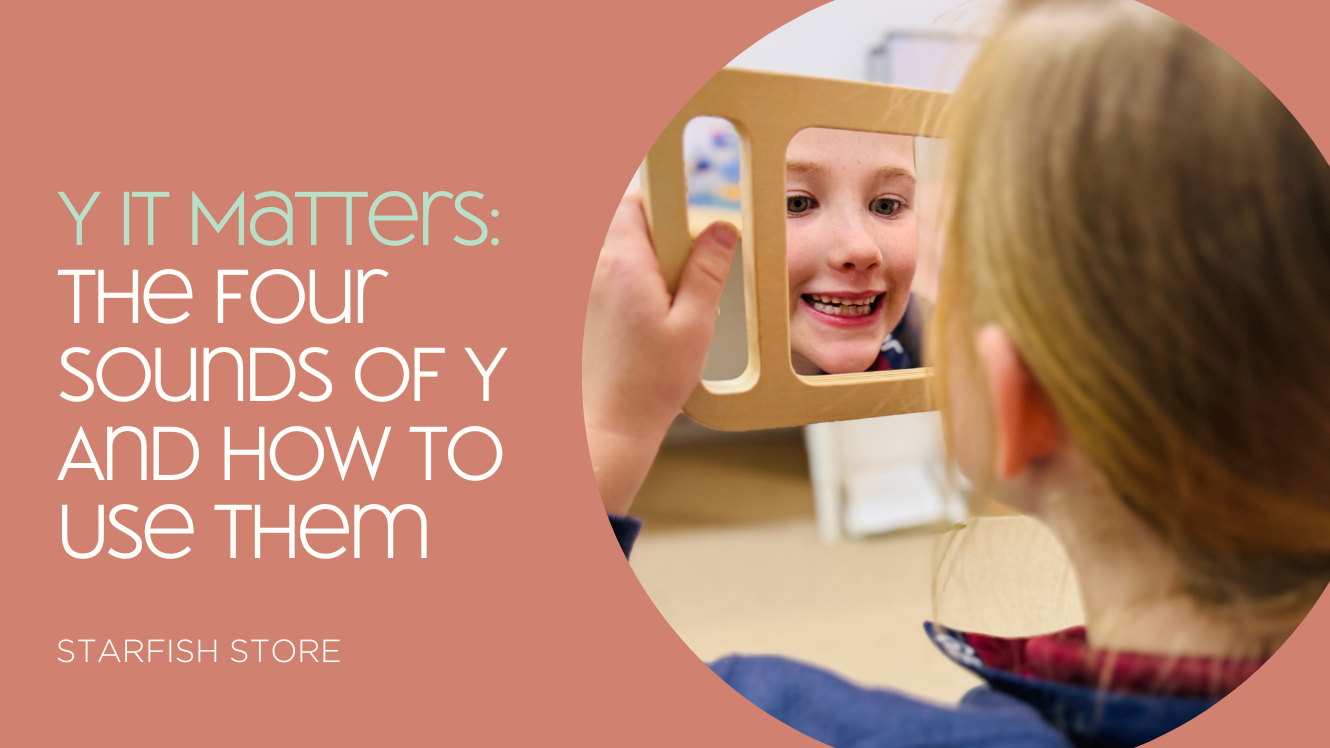Your Cart is Empty
Missed the shipping cut-off? Starfish Gift Cards are delivered instantly. → Shop Gift Cards
Missed the shipping cut-off? Starfish Gift Cards are delivered instantly. → Shop Gift Cards

Knowing all the important graphemes (letter/sound correspondences) and spelling rules will help you help your children learn to read and spell.
Seems hard? Too many to know? Don’t worry - we make it easy to learn and remember.. Step by step.
Once you get started, you’ll find it is actually fun. Look at it as a code to crack - you just need the clues to unlock the code.

The letter y can represent:
Believe it or not, the letter y represents a long e sound far more often than it represents the consonant sound.
Click the button below for a free download. You will now have a print out handy for your classroom or home.
|
Handy y word list |
|||
|
very |
my |
yellow |
gym |
|
happy |
by |
yes |
cymbal |
|
funny |
why |
you |
myth |
|
lolly |
sky |
year |
mystery |
|
copy |
fly |
yak |
hymn |
|
body |
try |
yesterday |
chrysalis |
|
tricky |
July |
yawn |
system |
|
sleepy |
reply |
yoga |
oxygen |
|
grumpy |
cycle |
yo-yo |
typical |
|
lucky |
python |
yuck |
syrup |
Despite y acting as a vowel far more often than it is a consonant, typically we teach the consonant sound first because it is straightforward and easy for children to grasp.

- When y is at the start of a word, it is a consonant sound.
- Long e sound - Y on the end of a multisyllabic word.
- An e on the end of a word is usually silent, so we need to use a y to do the job (of representing the sound) Eg babe - baby.
- Long i sound - usually on the end of a one syllable word.
- Most English words do NOT end with a letter i, which is why we use the letter y to represent that sound.
- Short i sound - in between two consonant sounds. Mostly, these words are of Greek origin.
Mastering this part of the phonics code is another step towards literacy proficiency. The letter y is one of those versatile letters that can represent different sounds depending on its place in a word. It pays to know them all, as it can help your reading, pronunciation, and spelling.
By understanding the different sounds that the letter y can represent, you're not just memorising rules—you're building a solid foundation in phonics that will make reading and spelling easier and more intuitive.
With each new phonics rule you learn, you're unlocking a new level of understanding. So, keep going, and soon enough, you'll find that what once seemed complex is now second nature. Happy learning!
Kirstie Wishart M.Ed (Special Education).
Owner and founder of The Starfish Store. Kirstie’s professional life has included: teaching (in both public and private schools in Australia, New Zealand and Thailand), lecturer and subject coordinator at the University of Wollongong, Educational consultant (working with children and young people with a trauma background), OoHC Case Work Manager, and Specialist Tutor (working with children and young people with significant learning difficulties and/or disabilities).

40 Proprioceptive activities for the classroom. Simple and practical activities to incorporate Proprioceptive into the classroom. 16 A4 sheets to print for your classroom, therapy space or home.